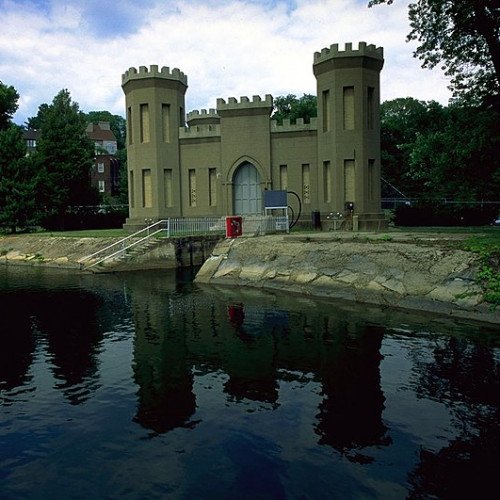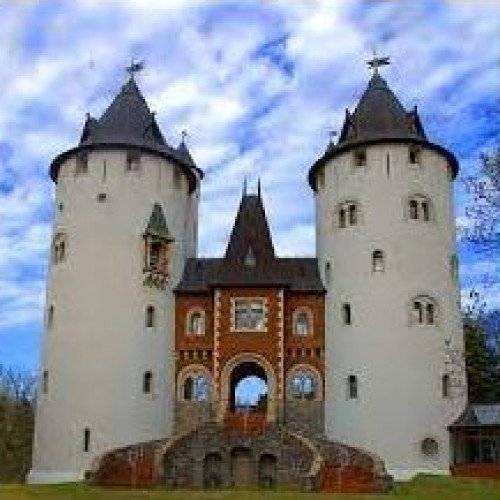Castles of "United States" CASTLE GATEHOUSE vs CASTLE GWYNN

CASTLE GATEHOUSE
Castle Gatehouse, Washington Aqueduct is a pumping station at the Georgetown Reservoir on the Washington Aqueduct in The Palisades neighborhood of Washington, D.C., United States. The building is on the National Register of Historic Places and contributes to the Washington Aqueduct National Historic Landmark. In 1852 the United States Congress authorized the Army Corps of Engineers to construct a water supply for the city of Washington, using the Potomac River at Great Falls as its source. Construction of a 12-mile pipeline began in 1853, and portions of the system began operation in 1859. Little Falls Branch was used as an interim source until the pipeline was completed in 1864. The water was routed to Dalecarlia Reservoir, followed by Georgetown Reservoir.[1] Improvements to the water system in the late 19th century included the Castle Gatehouse. The gatehouse was constructed at the Georgetown Reservoir to pump water into the four-mile long Washington City Tunnel that led to McMillan Reservoir, completed in 1902.[2][3] A filtration system was constructed at McMillan in 1905 and this system improved the quality of city water.[3][4][5] Construction of the gatehouse began in 1899. The design was intended to replicate the Corps of Engineers insignia. Portland cement plaster was used to replicate stonework and give the gatehouse an authentic castle appearance.[3] The gatehouse was added to the National Register of Historic Places on March 13, 1975. It is managed by the Army Corps of Engineers, Baltimore District.
Statistics for this Xoptio

CASTLE GWYNN
Castle Gwynn has been built by Mike Freeman over a period of years and is his private home. Initial groundbreaking was in 1980. Currently there are two towers. The final plan is for a four-tower castle area that will include a great hall A work in progress since 1970, Castle Gwynn began as a product of Mike Freeman’s imagination in a high school architecture class. A teacher instructed students to sketch their dream house. “I started drawing the plans for a medieval castle,” recalls Freeman. “In 1980, we broke ground on it.” For Freeman, the question was never “if” he would build his castle – it was always “how.” “If you’re willing to work hard, anything’s possible,” he says with the glint of experience in his eye. “People think just because I live in a castle, I’m rich. But for perspective, consider the fact that I work 12- to 18-hour days, and it has taken us 26 years to build the castle so far. I pay for it as I go, and when I run out of money, I stop working.” Following his high school graduation, Freeman spent 10 years establishing his photography career, doing research and looking for land on which to build his castle. “After talking about it for 10 years, I either had to build the castle or become the biggest liar in Tennessee,” Freeman says with a chuckle